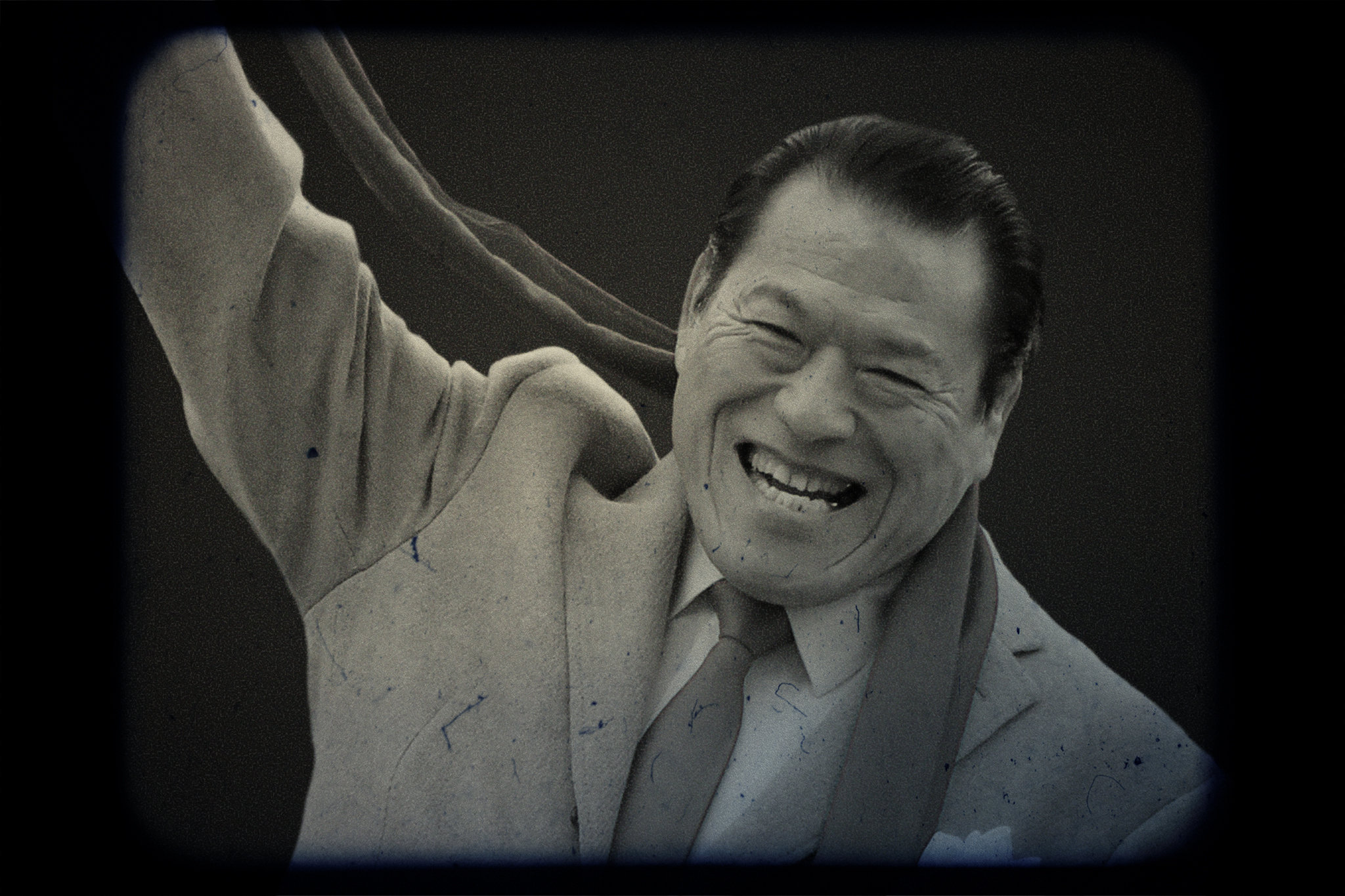Released in early October on the one-year anniversary of its subject’s death, the documentary movie Antonio Inoki wo Sagashite (Looking for Antonio Inoki) is an ambitious undertaking aiming to uncover the soul of one of the most fascinating men in recent Japanese history.
Antonio Inoki (born Kanji Inoki) might be synonymous around the world with pro-wrestling, but he was also a sports prodigy, a pioneer of MMA, a politician who got drunk with Fidel Castro, a husband, father figure, friend, mentor and an inspiration to millions. He lived the life of 10 people and if anyone deserves to be studied, analyzed and evaluated, or in other words, “looked for,” it’s this man. Does the movie find him, though? The short answer is no. But in the end, it doesn’t matter, because there’s a longer answer.
https://www.youtube.com/watch?v=Ci2oxAQE22E
Powerbombing Straightforward Narratives
With a story as rich and complex as that of Antonio Inoki (1943 – 2022), it’s best to start at the beginning. And that’s what the movie does, taking us to Brazil where Inoki moved with his family in 1957 to find their fortune. For a while, we hear from people who knew him then as the boy who sold fruit at an open market or worked at a coffee plantation.
The documentary then takes a series of unexpected turns. Instead of charting Inoki’s career, directors Keisuke Wada and Mitsuhiro Mihara jump straight to his retirement ceremony, which was held at Tokyo Dome in 1998, attracting 70,000 spectators. It’s a record that still hasn’t been broken. After that, it’s a series of interviews with former and current fighters, intertwined with dramatized scenes from the life of pro-wrestler Daisuke Nakamura, who felt especially inspired by Inoki throughout his life.
There’s even a segment in the documentary styled as a Buddhist lecture about Inoki’s bloody Death Match with rival Masa Saito on Ganryu Island in 1987. The lecturer, very poetically and with much aplomb, draws comparisons between the two fighters and Miyamoto Musashi and Sasaki Kojiro, two legendary sword masters who fought on Ganryu Island in 1612. It’s a fun part of the movie and full of historical trivia, but it makes the viewer wonder: what is the point of it all, and shouldn’t the movie focus more on Inoki himself?
Putting Newcomers in a Chokehold
Inoki’s influence on the world of Japanese pro-wrestling, his quest towards making the sport popular around the world, his work as a promoter working with a new generation of fighters, as well as most of his famous fights are largely missing from the documentary. It assumes that you already know who he is and about the major influence he had on Japanese culture. As such, it’s not very approachable for newcomers. But this shadow cast by the iconic status of Inoki also lends itself to a fascinating read of the documentary that even non-fans can appreciate.
A Legend as Big as His Chin
As the movie comes to an end, a strange thought occurs. All those different approaches to storytelling that Wada and Mihara used to talk about Inoki in a very disjointed way might be a way of showing that the man meant something different to different people. In the film, older pro-wrestlers refer to him as a god, but to people like Haroon Abid, the nephew of Pakistani wrestler Zubair Jhara Pahalwan, whom Inoki fought in 1979, he was a father as Inoki brought Haroon to Japan and took him on as his ward in 2014. For Japanese hostages held in Iraq before the outbreak of the Gulf War, he was a member of the House of Councillors who risked his life to negotiate their release with Saddam Hussein.
In a way, Inoki was too big. He did so much, meant so much to so many people, and was just so larger than life that it feels impossible to capture the essence of him in a single documentary. The directors actually come off as overwhelmed by his incredible life. That’s why it’s interesting to look at their film as cinematic grief.
A Dropkick Right to the Feelings
The title of the movie seems to come from repeated interviews with wrestler Kazuchika Okada. The search for Inoki he was talking about was a personal one and delivered from the point of view of a pupil wishing he could have been taught more by a great master. It’s all very personal but, at the same time, very universal. Okada’s words speak to the incredible feeling of loss that the world felt after the death of Inoki because, in one way or another, many people felt that there were still things that he could have given us.
Inoki lived freely and to the fullest. Few people can make such a claim. And it’s natural to want that, to get a piece of the energy he exuded, that charisma that came so naturally to him, on-stage at least. Off-stage, Inoki was apparently a very straightforward and sometimes even naive soul who loved puns and just wanted to make people happy through his performances.
That is why we mourn his death. And perhaps the directors of Antonio Inoki wo Sagashite are mourning as well. The disjointed structure of the documentary and a kind of narrative confusion can be viewed as stemming from a feeling of loss and sadness after the death of a man that they admired. You might even call the direction “grief-stricken.” Whether this is incidental or a shrewd, artistic depiction of sorrow in cinematic form is for the viewers to decide. Either way, it’s a fascinating experience.









